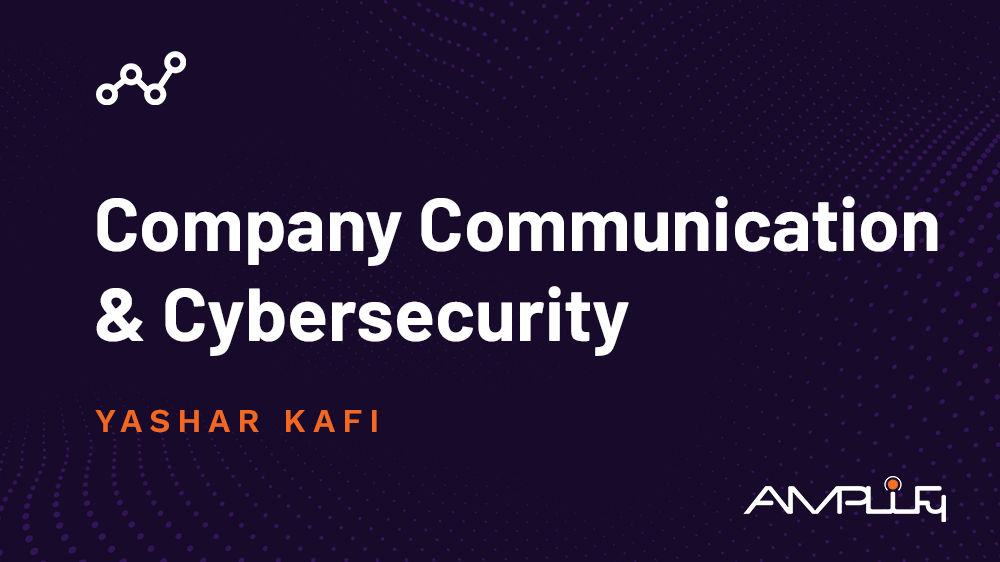Company Communication and Cybersecurity
When it comes to resource allocation, many organizations fail to realize that communication is at the
center of many of their competing interests. For example, a prominent issue we often observe at AMPlify is when organizations invest significant resources on competing technologies due to inter-organizational squabbles or a broader lack of communication. These organizations understand that technology is an important component of their operations that can lead to a
significant return on investment. But ROI decreases when there are multiple applications competing against one another.
This becomes especially problematic when it comes to cybersecurity. At best, lack of communication results in paying twice to solve the same issue once. At worst, you introduce unforeseen risk: competing applications are not designed to interact with one another, which leads to gaps in visibility. Furthermore, with the proliferation of SaaS applications, this problem has only increased. It is predicted that, by 2025,
85% of all business applications will be SaaS-based. Effectively, this means that deployable solutions have become increasingly siloed, and organizations are not prepared to bridge these gaps.
Last year alone, cybersecurity breaches accounted for an
average of $4.35 million per attack. It is predicted that more than 33 billion records will be stolen in 2023. And no one is immune. Companies like Apple, Meta and Twitter
have all reported security breaches in the last year. We no longer have the luxury of approaching cybersecurity as an IT issue—it is a problem that affects the entirety of your organization. As organizations hurry to fill a backlog of IT positions, it is incumbent upon employees themselves to be aware of cybersecurity risks and act accordingly.
Additionally, it is important to remember that hot-button phrases and applications in cybersecurity are nearly as dangerous as the attacks themselves. This is because the bedrock of a solid cybersecurity response is premised on the same strategies that support organizations: strong foundations and clear communication. That means it is important to stay up to date on trends but not to give your protection over to the latest fads. Without employing a combination of these strategies, not only will your cyber defenses fall, but so too will your organizational operations.
It is further important to remember that cybersecurity is not a one-size, fit-all proposition. In an era where working from home and other hybrid-office models has never been more popular,
the risks posed by cyberattacks has never been greater.
According to the U.S. Census, nearly 20% of the workforce now works from home, which equates to roughly 28 million access points that hackers can hit. This is yet another reason why cybersecurity is an organizational challenge that must be met by getting it right the first time. And that means partnering with the right collaborators and technology solutions to fit the needs of your business.
The bottom line is that throwing resources at technology is rarely, if ever, the solution to any problem. This practice becomes even less justifiable when multiple factions of your company are attempting to solve the same problem with similar solutions. Without a solid foundation of trust and communication, technology will fail to deliver a return on investment—and that is before organizations consider the need for planning, prioritization requirements, processes or leadership support. The bottom line? Do not place all your faith in technology solutions when the first step is getting back to basics.




